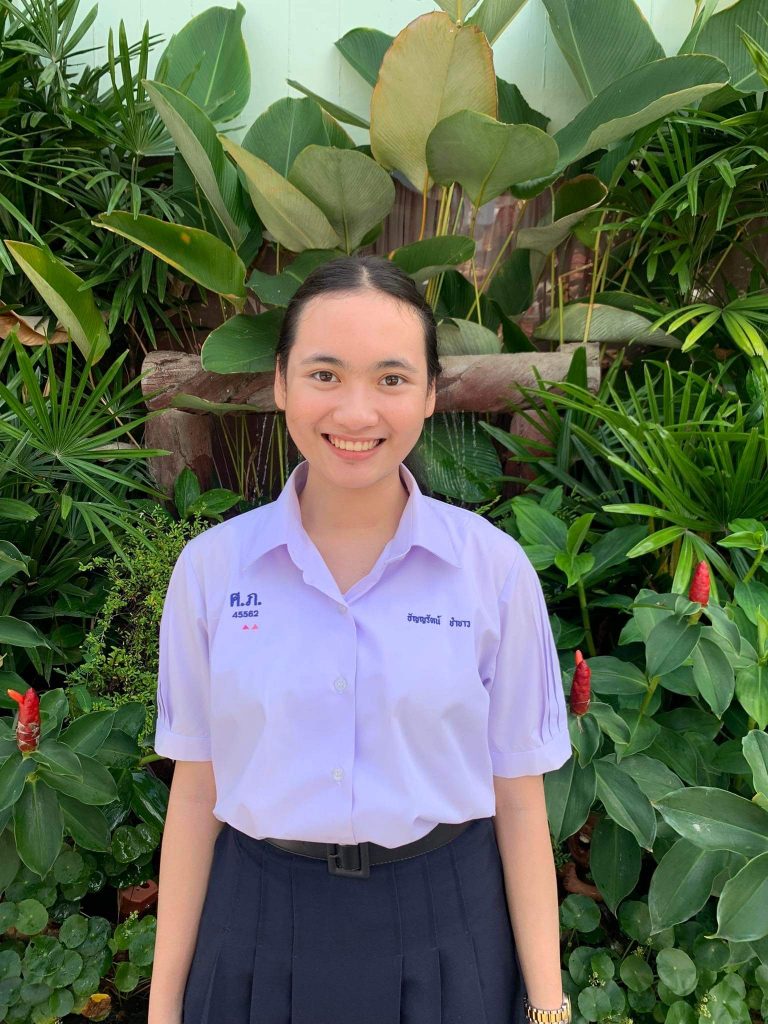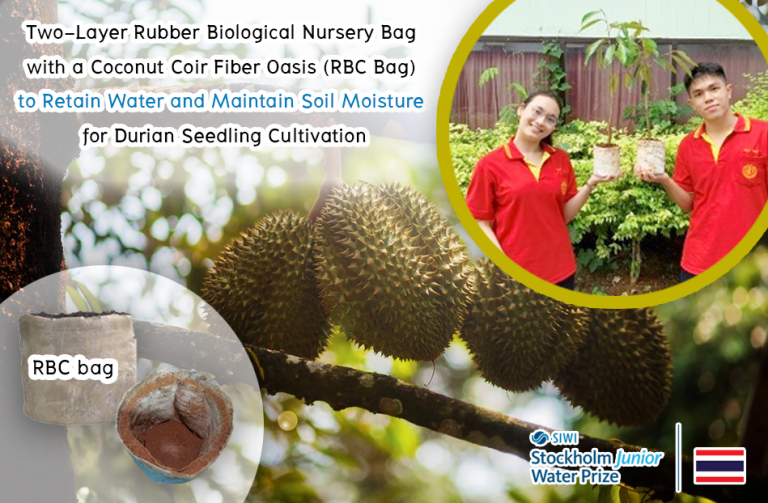heading

Hello, I’m Jaja, My full name is Tanyarat Khamkao.I live in Chumphon Province, Thailand. My province is an agricultural area. Especially the durian garden where my province has a lot of durian cultivation. I have seen a lot of use of water and the use of plastic nursery bags in cultivation. So I want to help conserve water and reduce the use of plastic nursery bags which will have a huge impact on water resources. I recognized the importance of this issue and created RCB bags to help conserve water and to reduce the use of plastic nursery bags, which is very important in conserving water.
Tell us what the water concern in your country is!There is a lot of wastewater in my country. And there is a lot of waste in rivers, canals or even the sea, especially what is known as microplastic.
This is what I think is one of the solutions for a sustainable future:I think we should tackle the root cause we all need to reduce plastic use. To prevent microplastics from remain in rivers, canals and seas

Two-Layer Rubber Biological Nursery Bag with a Coconut Coir Fiber Oasis (RBC Bag) to Retain Water and Maintain Soil Moisture for Durian Seedling Cultivation
Growing durian seedlings using plastic nursery bag requires regular watering because it cannot retain water and moisture, resulting in significant water loss and bring a plastic waste problem in the community. This innovation can solve the problems in water/groundwater management, plastic waste, and agriculture that align with SDGs and Thailand’s Bio-Circular-Green agriculture model. The innovation using rubber and coconut core fiber to process RBC bag can retain water and maintain soil moisture for durian seedling cultivation with 71 percent in 7 days before watering. The production cost was 0.19 USD/piece and it will degrade naturally. The use on farms during the summer can save groundwater 57.14 percent. User satisfaction satisfied with the maximum to high level approximately 5.0 – 4.7.

